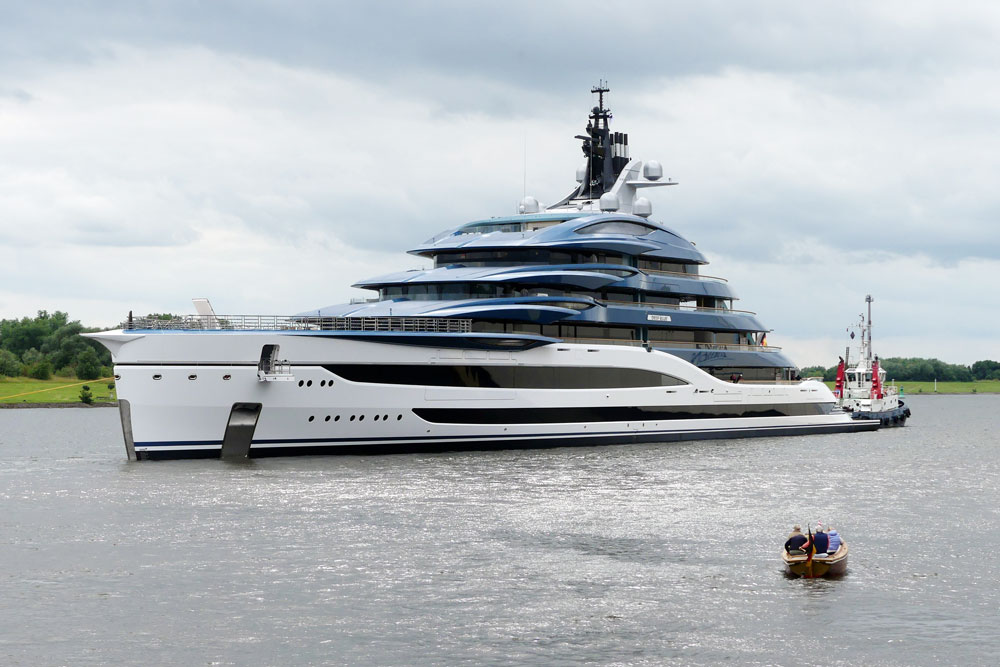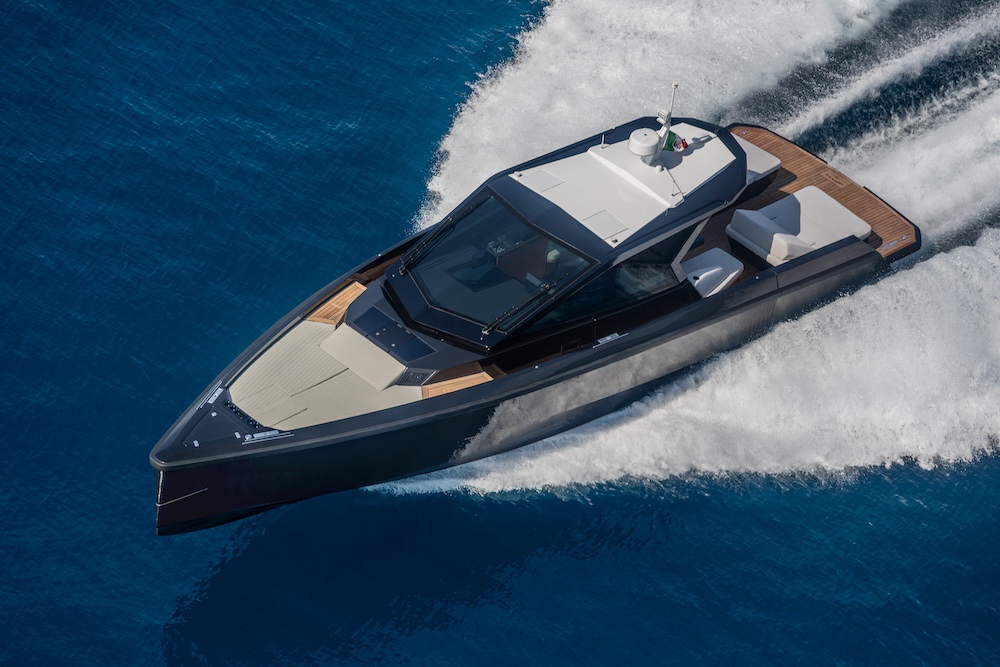The yacht builder Feadship is consistently pursuing its goal of becoming climate-neutral by 2030. The launch of “Project 713” marks a further step in this direction.
According to the company the new build represents yet another progressive step by Feadship towards its goal of being climate neutral by 2030 following other previous Feadships launches like “Obsidian” and “Project 821”. She is a prime example of meeting the long-term environmental and social sustainability expectations of Feadship’s diverse stakeholders. The exterior of “Project 713” has been designed by Studio De Voogt. The interior design is by Sinot Yacht Architecture & Design.
Solar cells with 24 kWh power
The yacht is the first Feadship to carry solar cells for auxiliary power generation. She is fitted with diesel-electric propulsion and the ability to run on non-fossil HVO, like all other Feadships. The hull form is optimised for cruising speed instead of top speed. The solar panels are designed for optimal performance and durability. The panels utilize the most efficient silicon cells available. Custom-made in the Netherlands, these panels contribute significantly to the yacht’s energy efficiency, producing up to 24 MWh annually.
“Project 713” is fitted with a high-efficiency, diesel-electric power system. Energy for both propulsion as well as the hotel load is supplied by four generators and a 400 kWh battery.
The yacht is also the first new-build Feadship to feature FSC-certified plantation teak for all the decking. The certification means the wood is harvested in a sustainable way.
Feadship-yacht gets sustainability label
“Project 713” has undergone a Yacht Environmental Transparency Index (YETI) Assessment report. This sustainability label looks at the complete life cycle of a yacht and is an instrument to objectively measure the ecological impact of its operational energy. “Project 713” belongs to the best in fleet at 35% below average impact, with the various efficiency enhancing features more than compensating the losses incurred by the electrical conversions on board. The owner has been instrumental for the design and environmental impact reduction.
In addition to the environmental advancements, the launch of “Project 713” underscores the significant economic impact of the superyacht industry in the Netherlands, Feadship says. Its contribution represents more than half the entire maritime industry in the country. This sector not “only drive innovation and craftsmanship but also generates substantial employment opportunities, supporting a wide array of skilled jobs from naval architecture to interior design and advanced engineering and craftmanship”, the company continues.









